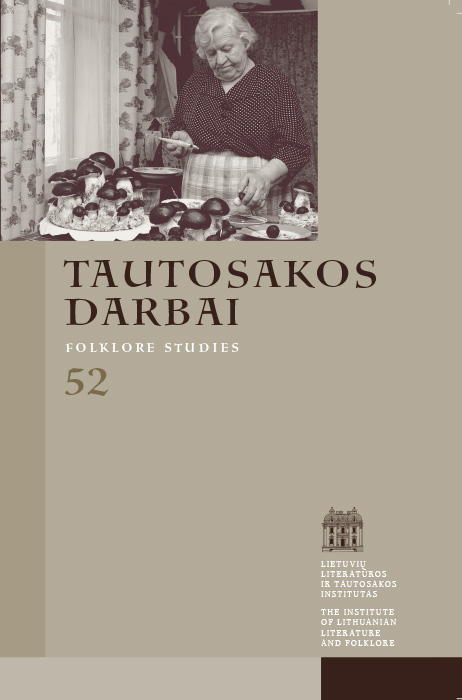The Mental Image of the Mountain Ash (Sorbus L.) in the Dictionary of the Lithuanian Language
Abstract
The article focuses on more than 200 illustrative sentences containing the word šermukšnis [‘mountain ash’], picked out from the twenty volumes of the “Dictionary of the Lithuanian Language” (Lietuvių kalbos žodynas – LKŽe). The aim of the author is describing the semantic image of the mountain ash as shaped in the dictionary, also establishing the peculiarities of this plant that emerge as the most important ones in its hypertext. While analyzing the accumulated materials using the interpretative, comparative and descriptive methods, the author of the article depicts the visual features and places of growing typical to the mountain ash, discusses the qualities and possible uses of its wood, elucidates its nutritional, medicinal and mythical characteristics. She also briefly outlines the way of presenting the mountain ash in Lithuanian folksongs and various divinations. The analysis of the illustrative samples given in the dictionary that contain the lexeme šermukšnis [‘mountain ash’] enables composing the general image of this plant. Namely, the mountain ash emerges as a slender, upright tree with pinnate, lobate leaves and white (in folksongs – red) blossoms, bearing red unsavoury fruit that can be pressed for juice or boiled for syrup, fermented for mead or wine, dried to store for the winter, fed to the pigs or eaten by birds. The quantity of its blossoms and fruit serve as a sign indicating the future weather or the expected harvest. This tree usually grows in the forest or on its outskirts, at the edge of the meadow, by the road, at the basis of the hill or on its slope, or close to the people’s homes. It is bound to dwarf other trees and exhaust the soil. Its bark, blossoms and fruit are allegedly medicinal (used to cure colds, ailments of liver, kidneys, stomach, etc.). The wood of the mountain ash is good for carving. In the context of the mythic worldview, the mountain ash emerges as an especially significant plant, praised by the Lithuanians for its medicinal qualities and honored for its special magical powers. The folklore and illustrations from the dictionary likewise testify to the peculiar effect of the mountain ash on the mythical beings: it protects people and human homes from witches, sorcerers, devils, pucks, fairies and their offspring, and other evil spirits. Devil is especially scared of its stick. The mountain ash also protects the livestock (including cows, horses and sheep) from various spells. Mythical powers of this tree are obvious in its ability to turn humans into werewolves and vice versa. Therefore, the mountain ash is clearly present in human life from birth to death.
